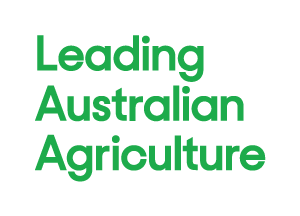“THE outlook for the farming sector is the most robust we have seen since the late 1980s,” Justin Smirk, Westpac Senior Economist, said today as the Westpac-NFF Commodity Index for June 2007 was released.
“The Index rose 1.8% in May to 18% higher than a year ago. While the fortunes of the year ahead will be driven by rainfall, the wider global economic forces continue to improve. In US dollar terms, the Westpac-NFF Commodity Index is at its highest level since early 1989.
“You can point to global dry conditions as the reason behind grain production not matching demand in 2006, but there has also been a fundamental shift in the composition of demand. Not only has the industrial use of grain risen (production of biofuels), but also the rapid growth in animal production has lifted the demand for fodder grain.
“Therefore, while it is safe to assume that a record Australian grain crop, and rising grain production in the rest of the world, should skim something off the top of grain prices in 2007, robust underlying demand and current low global stocks suggests downside risk should be limited.
“We believe the farming sector is well placed to bounce back in 2007. Farmers have become much more adept at managing drought using (conservation till) zero or minimal tillage/direct drilling, geo-positioning, stubble retention and a variety of on-farm water management strategies.
“This means that not only do they minimise losses in a dry year, but they can also maximise returns in a good year.
“Farm debt has lifted but, over the last decade, it appears this was investment into plant and equipment, farm improvements and/or farm purchases. Basically, farmers have been investing to expand size and lift production. Therefore, we see a solid bedrock that the farm sector can build upon in 2007… all dependent on rainfall, of course.”
Meanwhile, National Farmers’ Federation (NFF) Vice-President Charles Burke also noted: “Australian farmers have found new efficiencies in production that belie the harbingers of doom proclaiming the end of agriculture. Faced with droughts and increased international competition, they’ve had to.
“Right now, beset by the worst drought on record, modern farmers are achieving results that were unimaginable 20 years ago.
“For example, grain growers can only use the rainfall they receive, together with what they can ‘store’ in the soil. According to the Australian Bureau of Statistics and the Grains Council of Australia’s Farming Practices Database, since 2001 our wheat growers have increased their water efficiency by over 50%… since 1983 by over 200%.
“Put into perspective, in our harshest drought ever, our farmers produced 9,800,000 tonnes of wheat. Well down on the 26 million tonnes two years before, but had we been employing 1980s techniques, we would have produced less than 3,000,000 tonnes.
“We would not be able to meet the day-to-day needs the Australian population, instead reliant on imports. To yield almost 10 million tonnes, under the prevailing circumstances, is tangible testimony to the modern, innovative practices of our farmers.
“Environmentally-sustainable farming is making modern farming more productive than ever before.
“Farmers now use conservation tillage (either zero till or minimum till) to protect soil structure and greatly enhance moisture retention, while planting into crop stubble. The Grains Council of Australia advises that around 95% of Australian grain is produced using these more environmentally-sustainable practices.
“At the same time, over the last 15 years (according to analysis using ABARE figures), we have seen a 50% reduction in the use of diesel fuel on grain farms, which, while producing more efficient crops, also dramatically reduced greenhouse gas emissions.”
[ENDS]
The Westpac-NFF Commodity Index is weighted according to the value of Australian agricultural exports and includes only rural commodities – unlike other price indices that are overshadowed by oil, mineral and energy prices. It provides daily movements based on prices of Australia’s eight key farm exports – barley, beef, canola, cotton, dairy, sugar, wheat and wool – in both $US and $A.





Add comment